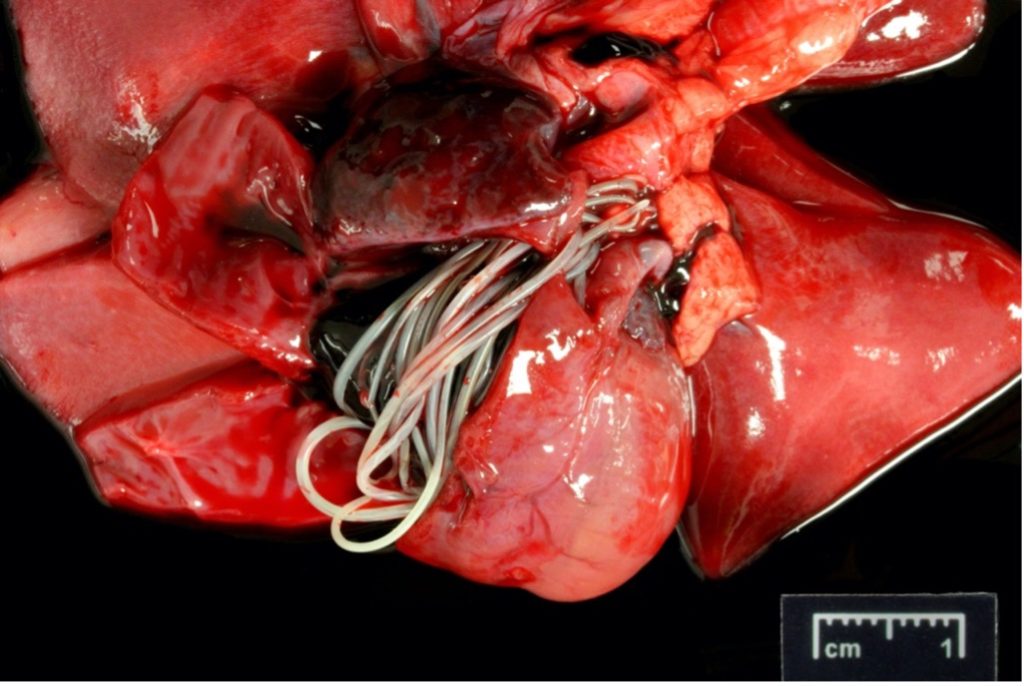Fatal Heartworm Disease and Caval Syndrome in a Ferret
Julie Anna Prusak and Erin Edwards, DVM, MS, DACVP
A 3-year-old, pet, domestic ferret (Mustela putorius furo) was found dead suddenly and was sent to the Texas A&M Veterinary Medical Diagnostic Laboratory (TVMDL) in College Station for postmortem examination. The ferret was diagnosed with heartworm disease and caval syndrome at necropsy. Three adult heartworms were found in the heart, filling the pulmonary artery, right atrium, and right ventricle (Figure 1). One heartworm extended into the caudal vena cava to the level of the diaphragm. The heart was mildly enlarged and dilated. The thoracic cavity contained a large amount of fluid (pleural effusion), and the lungs were secondarily atelectatic and collapsed. The liver showed evidence of chronic passive congestion. Tissues had a slight yellow hue consistent with icterus. There was significant subcutaneous edema over the dorsal and lateral thorax. These findings indicated caval syndrome and congestive heart failure secondary to the heartworm infection.
Heartworm disease is caused by the parasite Dirofilaria immitis, a filarid nematode that is spread by mosquitoes. Ferrets kept outdoors are more at risk for infection. However, indoor-only ferrets are also susceptible to infection, as exposure to mosquitoes is still possible. Due to the small size of ferrets, a small number of heartworms can cause clinical signs and death. Clinical signs mimic those that are seen in canines with heartworm disease but tend to progress at a more rapid pace. Many signs are, but not limited to, anorexia, dyspnea, coughing, holosystolic heart murmur, pleural effusion, ascites, and sometimes sudden death. If signs are present, an echocardiogram or an ultrasound can be done to try to determine if heartworms are present.
Conventional ELISA antigen detection can be performed, but may be limited since ferrets tend to have a low heartworm burden and since detectable female worms may not be present. Ferrets can be put on a monthly heartworm preventative to help prevent heartworm disease. Consultation with a practicing veterinarian is recommended for heartworm prevention administration.
Reference:
– Wagner, R.A. (2014). Diseases of the Cardiovascular System. In J. G. Fox & R. P. Marini (Eds.), Biology and Diseases of the Ferret (3rd ed., pp. 405-406). Ames, IA: John Wiley & Sons.
